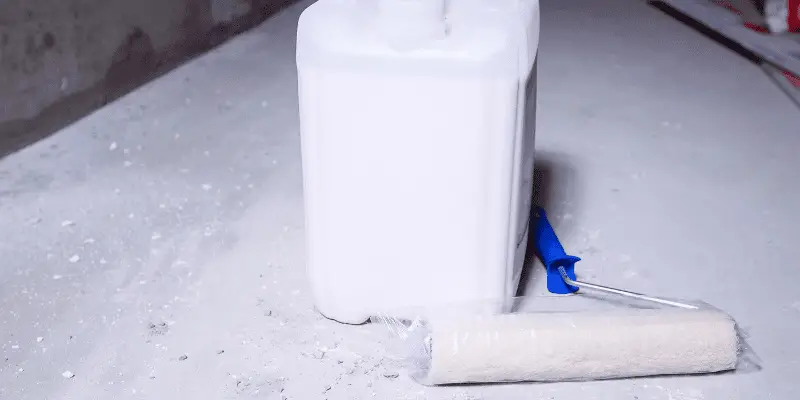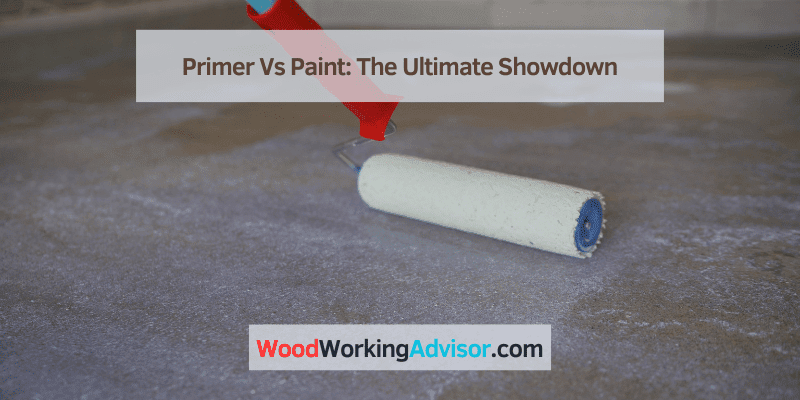Primer is a preparatory coating that enhances paint adhesion and durability, while paint provides color and protection to the surface. Understanding the differences between primer and paint is essential for a successful painting project.
Both primer and paint serve distinct purposes in the process of painting. Primer acts as a base coat to provide a smooth and uniform surface for the paint to adhere to, while also enhancing the durability and longevity of the paint job.
On the other hand, paint adds color and protection to the surface, enhancing its aesthetic appeal and shielding it from environmental elements. Choosing the right primer and paint for your specific project is crucial for achieving a professional and long-lasting finish. We will explore the characteristics, uses, and differences between primer and paint to help you make informed decisions for your painting projects.
Primer Vs Paint: An Overview
Welcome to our guide on the critical differences between primer and paint and their significance in the painting process. Understanding the distinctions between these two essential components can help you achieve exceptional results in your next painting project.
Key Differences
Primer and paint serve distinct purposes in the painting process. While primer is designed to promote adhesion and provide a smooth surface for paint application, paint is meant to impart color and protection to the surface. The key differences lie in their formulations and functions, fundamentally impacting the durability and appearance of the painted surface.
Importance In Painting Process
Recognizing the importance of primer and paint in the painting process is imperative for achieving a high-quality finish. Primer acts as a foundation, enhancing adhesion and hiding imperfections, while paint offers aesthetic appeal and protection. Their synergy in the painting process ensures improved longevity and durability of the painted surface.

Primer: What It Does
When it comes to painting, it’s essential to understand the role of primer in achieving a professional and long-lasting finish. Primer serves as a crucial foundation for paint, playing a vital role in enhancing adhesion, providing added protection, and ensuring a smooth and even surface. Understanding the purpose and benefits of using primer is integral to achieving a successful paint job.
Purpose Of Primer
Primer acts as a preparatory coating that is applied before the paint to enhance adhesion, provide added protection, and promote a uniform finish. It serves as a bonding agent between the existing surface and the paint, creating a stable and durable foundation for the paint to adhere to.
Benefits In Painting
Using primer offers several benefits in the painting process, including:
- Promoting better adhesion for the paint, reducing the risk of peeling and flaking.
- Enhancing the durability and longevity of the paint job by providing an added layer of protection.
- Improving the appearance of the paint by ensuring a smooth and even finish.
- Assisting in covering imperfections and stains on the surface, resulting in a more professional-looking outcome.
Types Of Paint
Different Types
When it comes to painting, there are several different types of paint to choose from. Each type has its own unique characteristics, making it suitable for different applications. The most common types of paint include:
- Primer: A base coat applied before painting to improve adhesion, create a uniform surface, and enhance the durability of the topcoat.
- Water-Based Paint: Also known as latex paint, this type of paint is quick-drying, easy to clean up, and offers excellent color retention.
- Oil-Based Paint: Known for its high durability and smooth finish, oil-based paint is ideal for surfaces that undergo frequent wear and tear.
- Acrylic Paint: This versatile paint dries quickly, resists fading, and can be used on various surfaces, including wood, metal, and concrete.
Properties And Applications
Understanding the properties and applications of each type of paint is crucial for achieving optimal results. Here’s a breakdown of the properties and applications of different types of paint:
| Type of Paint | Properties | Applications |
|---|---|---|
| Primer | Improves adhesion, enhances durability | Used as a base coat before painting |
| Water-Based Paint | Quick-drying, easy to clean up, good color retention | Ideal for interior walls and ceilings |
| Oil-Based Paint | High durability, smooth finish | Suitable for exterior surfaces, metal, and wood |
| Acrylic Paint | Quick-drying, resists fading | Applicable on various surfaces such as wood, metal, and concrete |
Choosing The Right Option
When it comes to sprucing up your home, choosing between primer and paint can play a crucial role in achieving the desired finish. Both primer and paint serve distinct purposes, and understanding the difference between the two can help you choose the right option for your project. Let’s delve into the key factors to consider when making this decision.
Factors To Consider
Before diving into the selection process, several factors should be taken into account to ensure that you are making the correct choice for your project. Consider the following:
- Surface Condition: Assess the condition of the surface you are painting. If there are imperfections or if the surface is porous, using a primer can help create a smooth, uniform base for the paint to adhere to.
- Paint Type: Different surfaces may require specific types of paint, and choosing the appropriate primer can enhance the adhesion and durability of the paint.
- Stain Blocking: If you are dealing with stains or discoloration, a primer with stain-blocking properties can prevent them from bleeding through the paint.
- Sheen Level: Consider the sheen level you desire for your project. Some primers are formulated to promote adhesion and uniformity, while others can enhance the overall sheen of the paint.
Best Practices For Application
When applying primer and paint, following best practices can ensure optimal results. Consider the following tips for application:
- Clean the Surface: Before applying a primer or paint, ensure that the surface is clean and free of dust, dirt, and grease.
- Use the Right Tools: Select appropriate brushes, rollers, or sprayers based on the type of primer or paint being used and the surface being covered.
- Apply Thin, Even Coats: To achieve uniform coverage and avoid drips or runs, apply thin, even coats of primer and paint.
- Allow Adequate Drying Time: Follow the recommended drying times between coats and before applying paint to ensure proper adhesion and durability.
The Ultimate Showdown: Application And Results
When it comes to choosing between primer and paint, understanding their application and the results they offer is crucial. In this ultimate showdown, we’ll compare the application and results of primer and paint, helping you select the best option for your project.
Comparing Results
Before diving into the application process, it’s important to understand the results each option offers. Take a look at the comparison table below to evaluate the different outcomes between primer and paint coatings.
| Aspect | Primer | Paint |
|---|---|---|
| Base Coating | Provides a smooth base for paint adhesion | Adds color and final finish |
| Surface Coverage | Coverage can vary based on the type of primer used | Typically covers a larger surface area compared to primer |
| Durability | Enhances the durability and longevity of the paint job | Offers varying levels of durability depending on the type of paint and its application |
Selecting The Best Option
Ensure each H3 heading adheres to HTML syntax. Considering the application requirements and the desired final results, here are a few key points to guide you in selecting the best option:
- If you’re aiming for a vibrant and specific color finish, opt for paint directly without using a primer.
- For surfaces with imperfections or variations in porosity, applying a primer can provide a smooth and even base for paint application.
- When enhancing the longevity of the paint job, using a primer as a base coating can significantly improve the durability of the finish.
- If you’re working with raw wood or metal surfaces, and want to ensure better adhesion and coverage, applying a primer before the paint is recommended.
Frequently Asked Questions Of Primer Vs Paint
What Is The Difference Between Primer And Paint?
Primer is used to prepare a surface for painting, while paint adds color and protection. Primer helps paint adhere better and covers imperfections. Paint adds the desired color and finish to the surface.
Can I Use Paint As A Primer?
Although it’s not ideal, some types of paint can act as a primer. However, for the best results, it’s recommended to use a separate primer to ensure proper adhesion and coverage before applying the paint.
Do I Need To Use Both Primer And Paint?
Using both primer and paint is recommended for optimal results. Primer ensures a smoother and more durable finish by providing better adhesion and hiding imperfections, while paint adds color and protection to the surface.
How Many Coats Of Primer And Paint Do I Need?
Typically, one coat of primer is sufficient, but more may be necessary for heavily stained or porous surfaces. For paint, one or two coats are usually enough, but certain colors or finishes may require additional coats for full coverage.
Conclusion
In the battle of primer vs paint, both have unique purposes in creating a flawless finish. Understanding the role of each is crucial in achieving a professional-quality result. While primer provides a smooth base for paint adhesion, paint adds color and protection.
The choice between them depends on the specific project requirements and desired outcome.



One thought on “Primer Vs Paint: The Ultimate Showdown”